If you’ve ever dealt with a lice infestation, you know just how frustrating little parasitic insects can be. These tiny creatures can be extremely persistent and difficult to get rid of, leading many to wonder how long they can actually survive outside of a human host.
One particular area of concern is bedding, as we spend a great deal of time there each night. So how long can lice survive on bedding, and how often should you be giving your sheets a wash? Find out everything you need to know about these pesky critters and how to get rid of them.
What Are Lice?
Lice are wingless parasitic insects that feed on human blood. They spread from one person to another through close contact or sharing of personal belongings such as hairbrushes and clothes.
There are many different types of lice (nearly 5,000 different species to be exact), but for the sake of this article, we’ll focus on lice that feed on human blood to survive.
Lice vs Nits
Lice and nits are the same insect, but at different stages of their lives. Nits are lice eggs that are laid on shafts of hair very close to the scalp. Once they hatch they become lice, which burrow into the scalp.
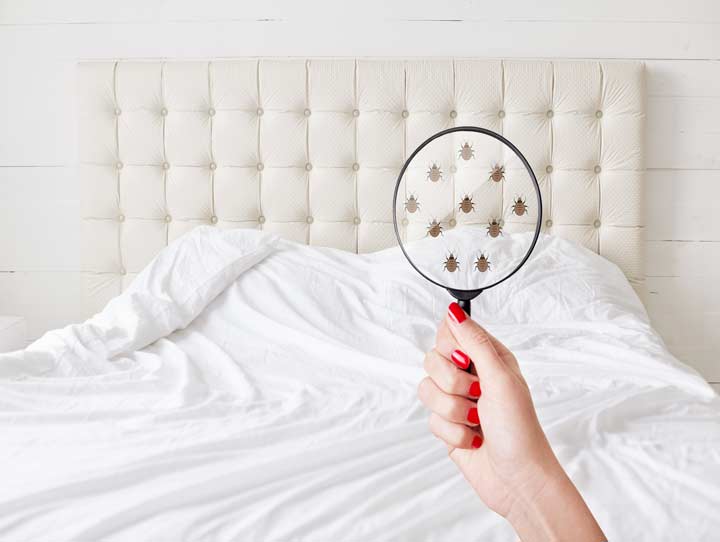
Lice vs Dandruff
When lice lay eggs in hair, it often looks like dandruff. But the two are very different! Dandruff is dry skin that causes your scalp to flake, leaving white flakes in your hair.
Nits stick to hair quite aggressively and are difficult to remove, while dandruff is easy to shake off. Dandruff and lice may cause itchy scalps, but people with lice also tend to feel crawling sensations across the top of their heads.
Lice vs Fleas
Lice and fleas bear a similarity in that they can both live off a human host, however, fleas prefer animal hosts. While lice are often mistaken for fleas, they actually look quite different. Fleas tend to be rounder in shape, while lice have long slender bodies.
Another notable difference is that fleas can hop quite a distance, while lice only have the ability to crawl. Lice are also very dependent on their human host and can only live up to two days on their own, while fleas can live up to 100 days without any host at all. Learn more about the signs there are fleas in your bed.
Lice vs Bed Bugs
Bed bugs and lice are much easier to tell apart. Bed bugs are much bigger, averaging a quarter of an inch in length, while lice are about an eighth of an inch long. They also differ in color quite drastically. Lice are a whitish-gray color and bed bugs are brownish-red
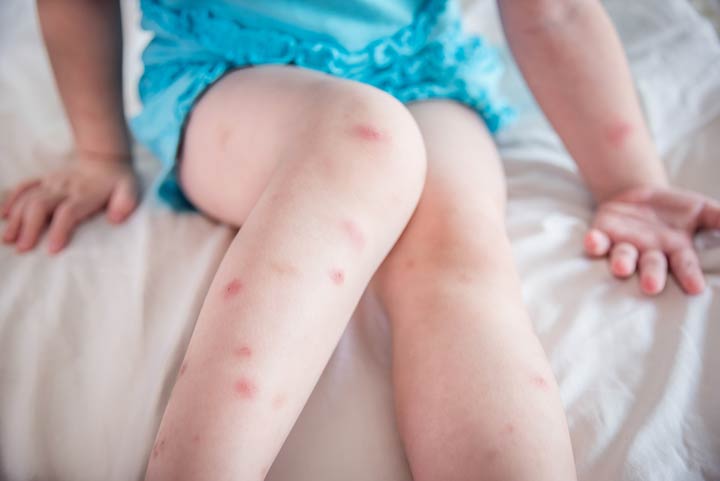
Bed bugs don’t generally live on humans, they only make contact with humans every couple of days so that they can feed. They might end up in your hair or clothes, but will likely wash off in the shower or hide when you get up and move about. To ensure you can eradicate them quickly, look out for the early warning signs of bed bugs.
Types of Lice
These are the different types of lice that live on the human body and can inhabit our living spaces.
Head Lice
Head lice crawl from one person to another when humans are in close contact. They can also be transferred via personal items that come into contact with the infected person’s hair, such as hair brushes, hats, scarves, and towels.
There are a couple of telltale signs that you have lice, including an itchy scalp and a crawling feeling in your hair. It often takes a couple of lice shampoo treatments to fully eradicate head lice, which can take two to three weeks.
Head Lice Lifecycle
Once an egg (also known as a nit) has been laid, a louse will emerge six to seven days later. Nits are 0.8 mm in length and are a tiny oval shape.
Nymphs (baby lice) are 1.1 – 1.3 mm in length and look like smaller versions of adult lice. They molt two days after hatching and again three days later. Their third and final molt takes place 10 days after hatching.
After their final molt, they emerge as an adult louse and are ready to mate. Within one to two days after mating, the female lice lay their eggs. Female lice will then lay three to eight eggs per day for about 16 days.
After 32 – 35 days, the louse will die.
Body Lice
Body lice are passed from person to person. They can also be transferred through clothing, bedding, or towels that have become infested by someone who has body lice.
If you have body lice, you will experience an intense itch and may develop a rash caused by an allergic reaction to the bite. To get rid of body lice, you simply need to wash with hot water and soap, as well as wash your clothing and bedding. It can take up to two weeks for the body lice to disappear, as it can take up to two weeks for nits to hatch.
Body Lice Lifecycle
Female lice like to lay their eggs near clothing seams. Eggs will hatch when the temperature is just right, which usually takes place six to nine days after they are laid. These eggs are a yellowish-white color and 0.8 mm in length.
Once the nymph emerges from the egg at about the size of a pinhead, it will feed for the next nine to 12 days. During this time, it will grow bigger and molt three times. Then, the lice will reach adulthood.
The adult body louse is 2.5 – 3.5 mm in length and is a grey-white color. They start mating immediately after maturation, and the females will lay between 275 to 300 eggs in their lifetime. Despite this mass breeding, they only live about 30 days in total.
Pubic Lice
Pubic lice are passed from one person to another by close bodily contact of the pubic region, usually during sexual contact. On rare occasions, they can be passed from one person to another by the sharing of underwear, towels, or bedding.
If you are suffering from a pubic lice infestation, you will likely experience itching of the pubic region. You may also see white dots (eggs) attached to your pubic hair, small red bumps from louse bites, and brown spots (lice feces) in your underwear. To get rid of the problem, you can put lice-killing lotion along the region for seven to 10 days.
Pubic Lice Lifecycle
Pubic lice eggs are laid on the pubic hair and remain there for six to eight days before hatching. These transparent round eggs are only 0.8 mm in length.
Once the nymph (1.1 – 1.8 mm) emerges from the egg, it takes 15 days to reach full adulthood. They are shaped like a smaller version of the adult pubic louse, which looks like a crab when viewed under a microscope.
As adults, pubic lice range from 1.25 – 2 mm in length and are grey in color. The female pubic louse will lay 30 – 90 eggs in her lifetime, which lasts just under a month.
How Do Lice Spread?
Head lice generally spread through person-to-person contact, this is why they spread so quickly among children. They also spread through the sharing of personal items like hair brushes, hats, pillows, and towels.
How Long Can Lice Live on a Mattress?
According to the CDC, the average lifespan of an adult louse is 30 days. But this is when the louse is living on a human host, feeding on human blood a few times a day. When a louse loses its human host, it can only live one to two days without feeding.
This means that lice can only live on a mattress for a maximum of two days.
How Long Can Lice Live on Bedding?
If a louse becomes detached from its human host, it can only survive one to two days without feeding. This means that if lice are hiding in your bedding, they can’t live there long.
How Long Can Nits Live on Bedding?
While it is possible for nits to fall onto bedding, pillows, and mattresses, they cannot actually survive and hatch in your bedding. The reason for this is that they need body heat and blood to survive.
How to Treat Your Mattress for Lice
While it is highly unlikely that lice have made their way to your mattress, it is a good idea to clean your mattress to ensure no infestations take place. Once you have removed and washed your bedding and linens, vacuum your mattress and spray it with lice-deterrent essential oils. Lavender or peppermint are good options, as they will also help you to fall asleep.
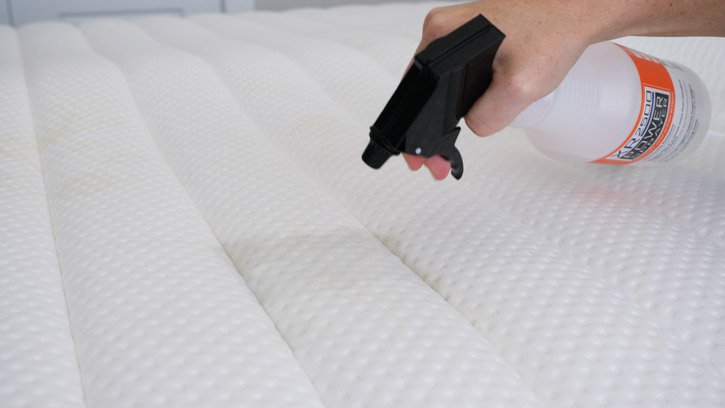
How to Kill Lice on Bedding
It’s important to clean your bedding after a lice infestation. The CDC recommends machine-washing your bedding on high heat (130°F) to kill any lice that may have fallen onto your bed. If you are not able to machine-wash your bedding, try sealing them in a plastic bag for two weeks. This will ensure that any lice and nits are completely dead, so you won’t risk reinfestation.
How to Kill Lice on Sheets
Cleaning your sheets frequently is good hygiene practice, but when you’ve had a lice infestation, it’s even more important. Luckily, all you need to do is machine-wash your sheets on a high heat setting — 130°F is recommended.
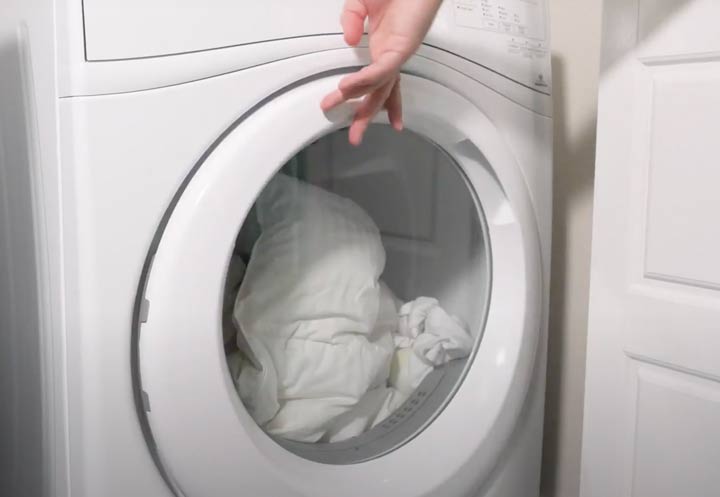
How to Kill Lice on Pillows
While it is highly unlikely that lice have made their way to your pillow, it is better to be safe than sorry. If your pillow isn’t machine-washable, you can seal it in a plastic bag for two weeks to ensure all lice and nits are dead.
RELATED: How to Clean Your Pillow
How to Kill Lice on Blankets
Blankets should be machine-washed on high heat. This will ensure that any surviving lice will be killed. When washing a Sherpa blanket or cleaning a weighted blanket, you will need to follow the care instructions carefully.
If you are unable to machine-wash your blankets, seal them in plastic and leave them for two weeks.
How to Prevent Lice from Invading Your Bed
Cleaning your mattress, sheets, and pillows can be a hassle, so it’s best to prevent lice from getting into your bed in the first place. These are a couple of things you can do to prevent lice from invading your bed.
Get a Mattress Protector
A good mattress protector not only protects your mattress from unwanted stains but can also stop little critters like lice from getting into your mattress. This means that if you do happen to get head lice, you don’t have to stress about cleaning your entire mattress.
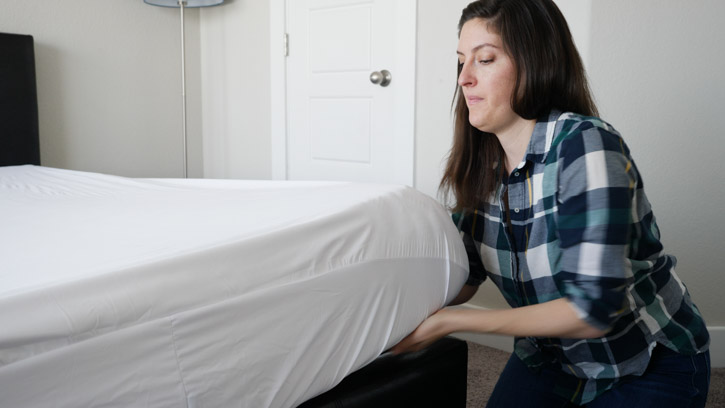
Regularly Clean and Disinfect Your Bedding
Regularly washing and disinfecting your bedding is a great way to stay ahead of any infestations. But how often should you wash your sheets? According to the Cleveland Clinic, you should wash your sheets at least once every two weeks. If you live in a warmer climate or snuggle with your pets at night, then more frequent washing is advised.
Use Pest-Deterring Essential Oils
Make use of the natural powers of essential oils to deter head lice from getting into your bedding. Lice particularly hate lavender, eucalyptus, tea tree, peppermint, rosemary, cinnamon leaf, geranium, and thyme. Spraying these over your bed sheets can deter them from making your hair their home.
Pay Special Attention to Hair Care
It’s important to wash your hair and condition your scalp on a regular basis to keep your hair clean. If there are kids in the house, their hair should be checked regularly.
If someone does become infested with lice, ensure that they use lice shampoo and comb all nits out of their hair. Their sheets and bedding should then be washed on high heat. Scour the house for stray hairs to prevent lice from infesting other pieces of furniture.
All hair brushes, hats, and scarves used by the person with lice should be washed to prevent the spread.
FAQs
Will bed bug spray kill lice?
Bed bug spray is effective in killing lice and their nits. Spraying it on your bed on a semi-regular basis can help prevent infestations.
Do lice lay eggs on bedding?
Head lice do not lay eggs in bedding, because the nits need body heat and blood to survive.
Can you see lice on bedding?
Because head lice are a whitish-gray color, they can be difficult to spot on bedding. You are not likely to find many of them in your bed, as they need a human host to survive.
Can head lice live on pillows and sheets?
Head lice can only live on pillows and sheets away from their human host for two days.
Does bleach kill lice on bedding?
Bleach is an effective treatment for killing lice on bedding, but it might not be the best thing for your sheets. Thoroughly read your bedding’s care instructions before bleaching.
Does heat kill lice on bedding?
Heat can kill lice on bedding, as long as it’s hotter than 130°F

